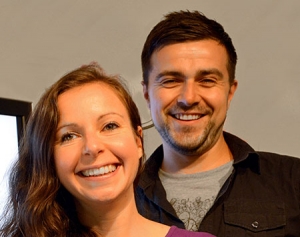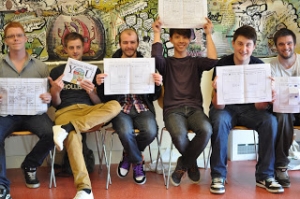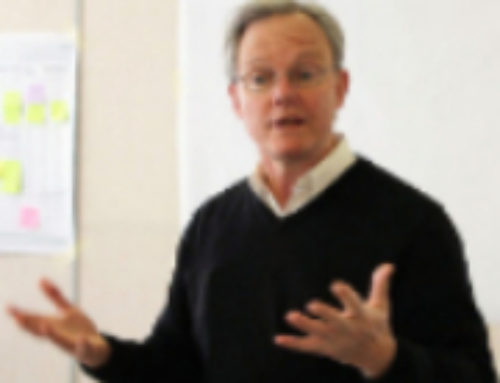 Lucy Griffith and Chris Thomas first caught my eye when they posted about using the Business Model You® methodology to conduct an extraordinary two-day career workshop at their university.
Lucy Griffith and Chris Thomas first caught my eye when they posted about using the Business Model You® methodology to conduct an extraordinary two-day career workshop at their university.
Since then, Bruce Hazen and I have met and collaborated with them in Portland, Oregon and in the UK. Now Lucy and Chris have launched Life Design, a completely new approach to career development for university students. Last week we caught up through an e-mail Q&A:
What prompted you to create Life Design?
We were helping final year students to start their own businesses, but we noticed a far more fundamental need. Many students were uncertain about their overall direction following graduation and felt poorly equipped to tackle this “wicked” career problem. From our own backgrounds, we saw the potential of Design Thinking to address this challenge.
Life Design uses applied design thinking to help pre-career individuals (who may lack significant life experience to draw upon) explore opportunities and design a range of possible futures for themselves. All this is taking place at the University of Wales Trinity Saint David.
Traditional full-time jobs are quickly disappearing and contingent (temporary) employment is becoming the norm. How does Life Design address this trend?
Life Design provides students with a design toolkit they can use at any point in their lives. Once you know how to apply design thinking to yourself, you can do this whenever you need to. We’re looking to help our graduates achieve what Opengart and Short (2002) call “employability security” — the ability to recognise and apply core transferable skills in a rapidly changing working environment.
Tell us how you use alternative program delivery methods. 
This programme is human-centred in its design, which means we put the student at the heart of our thinking. Most students have grown up using digital technologies, so to get them thinking about their futures early in their university experience we need to meet them in their own “space.” Video, social media, flipped classrooms and self-organised learning environments are all in the mix for us. We start with the question “how can we engage students?” and we know that the answer to this question will change regularly.
Career education in the United States seems stuck in the 1970s. How about the UK? What should post-secondary educational institutions be doing to update career program for students?
Firstly, forget “matching” approaches. Diagnosing and prescribing the best career for a student hasn’t worked for years now, and is unlikely to work in a future where we don’t even know what jobs will exist in two years time! What’s needed is a focus on equipping people with the tools and mindset that will enable them to reflect on themselves, spot opportunities, move flexibly throughout their careers and create their own job opportunities.
Secondly, we need to use the same tools employers use. Forget software programmes that create personal “portfolios” in a vacuum. We should be engaging all students with LinkedIn (and other tools employers use) to create their digital profiles.
Finally, engage students as early as possible in developing a mindset of proactively exploring career opportunities during their university years. This can start immediately upon enrollment.
 You’re both experienced university instructors. How has your classroom experience informed Life Design?
You’re both experienced university instructors. How has your classroom experience informed Life Design?
Although we teach different subjects (Chris teaches Industrial Design, Lucy teaches Marketing), we realised that we had both been trained to see everything from the user perspective. This is something we have always applied in our teaching. Listening to our students, observing how they learn, and understanding their concerns is what prompted us to develop Life Design.
What question(s) would you love your administration to ask?
We’ve had fantastic support from our university, but what we’d really like to see is local and national governments asking, How can we use design thinking to address this universal problem — and other key issues facing our society — by starting with young children? We want to support generations of people who are equipped to deal with the complexity and uncertainty of modern life. We see Life Design as one simple step in that direction.



